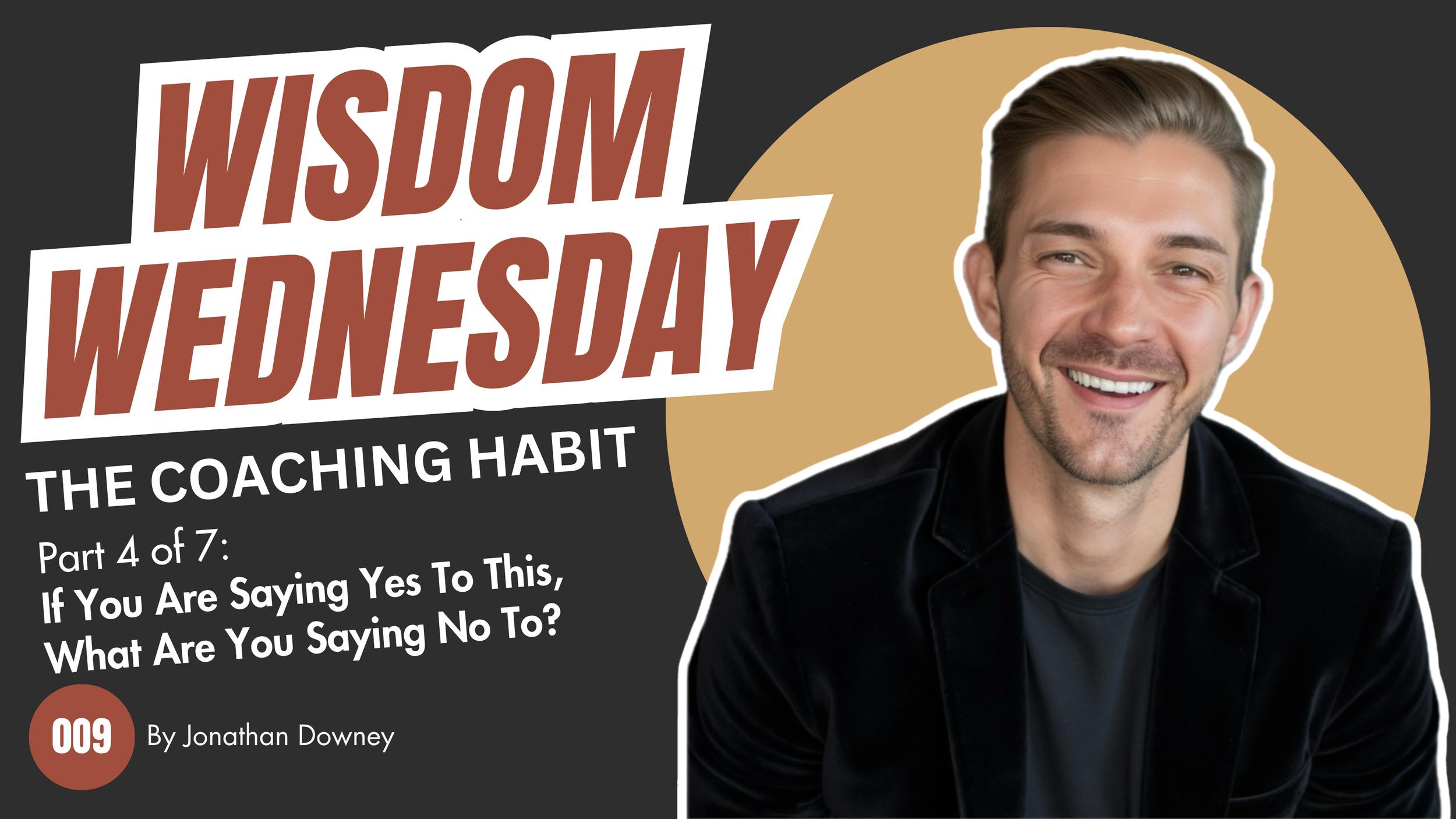Every yes costs something.
But most people never pause to ask—what?
Rachel and I had already uncovered the heart of her challenge.
She was overwhelmed. Burned out. Caught in a loop of overcommitting and overperforming to prove her worth. The real challenge wasn’t just the workload—it was the belief that saying no would make her less valuable.
After sitting with that for a moment, I asked:
“If you’re saying yes to this, what are you saying no to?”
She stopped mid-thought.
Then said, “I guess… I’d be saying no to my evenings. To my focus. To sleep. And probably to the kind of leader I’m trying to become. I’m trying so hard to prove myself that I’m slowly trading away the version of me I actually want to grow into.”
That moment reframed everything.
Why this question matters
This is the Strategic Question, and it’s all about choice.
Michael Bungay Stanier explains that every yes is also a no—whether we realize it or not. We say yes to meetings, stretch assignments, volunteer tasks, last-minute asks… but rarely stop to consider what we’re trading in the process.
This question shines a light on the invisible costs:
Time
Energy
Values
Identity
For Rachel, her “yes” reflex had been slowly eroding the boundaries she wanted to have but never felt she could claim. This question gave her permission to look at those tradeoffs—and start choosing differently.
When and how to use it
Use “If you’re saying yes to this, what are you saying no to?”:
When someone is feeling stretched, overcommitted, or conflicted
When they’re trying to please everyone at once
When they need clarity before making a decision
It’s not about guilt—it’s about alignment.
And it doesn’t just reveal what needs to stop—it helps reinforce what matters most.
With Rachel, it helped her realize that each yes without intention was a no to herself. Her growth. Her peace.
Why it matters:
Leadership isn’t just about saying yes to opportunities.
It’s about saying yes on purpose.
This question doesn’t shame. It sharpens.
It turns default into choice—and choice into clarity.
It helps people move from reaction to reflection—and from pressure to presence.
Your Turn:
Next time someone says yes too quickly—or too often—try this:
“If you’re saying yes to this, what are you saying no to?
Let them sit with it.
That pause might be the most strategic moment of their day.
And it might just change the way they lead themselves—and others—moving forward.
Coming next week on Wisdom Wednesday:
We’ll explore the Foundation Question and how it can reconnect people to their voice, values, and next step forward.
#LeadershipDevelopment #TheCoachingHabit #CoachingMindset #GrowThroughLeadership #LeadToLearn #WisdomWednesday

